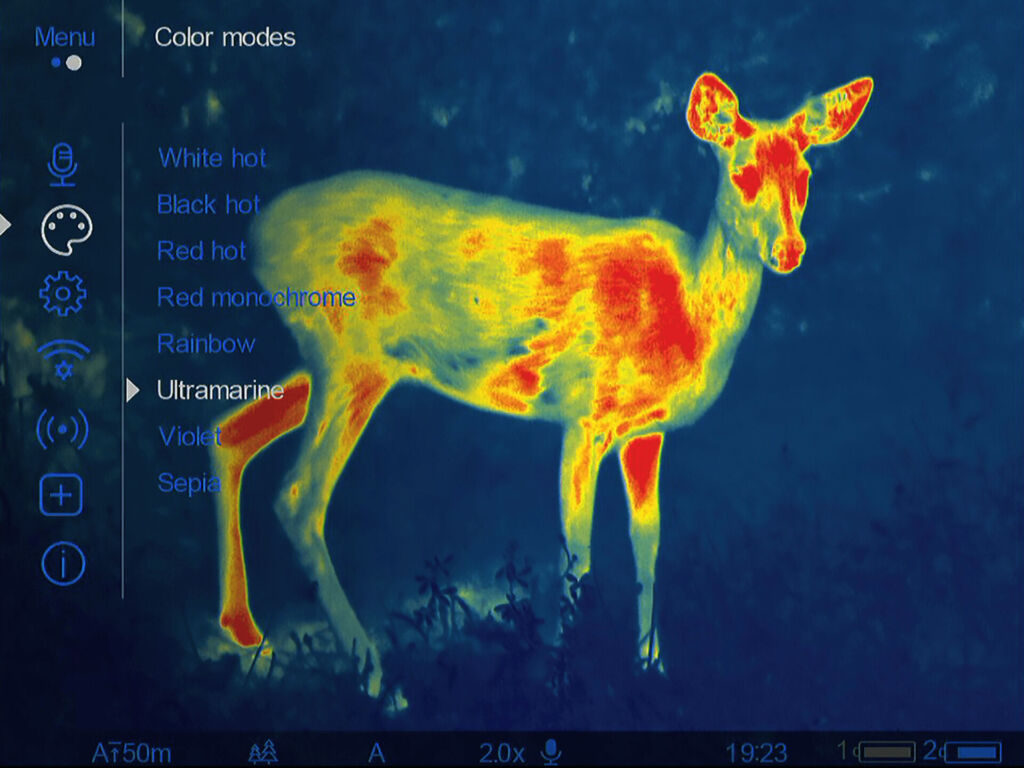Thermal Vs. Night Vision

Let’s look into it, shall we?
When it comes to comparing night vs thermal, we believe one should start with defining the terms and understanding the technology.
Basically, you could say that our night vision devices work pretty much the same as any digital camera (there are analogue night vision devices, too, but since you won’t find them at Pulsar, we won’t be covering them this time). The only difference is a greater magnification – a night vision device will absorb any light available to it, magnify it, and then display the image in black and white.
Meanwhile, thermal imaging works by measuring the heat signals of various objects and comparing them to each other. All objects emit at least some infrared radiation that is not visible to us but can be caught by the device. Once the sensor detects the radiation, it then displays an image to you on the screen.
A typical thermal image is multi-colored, but our devices have eight different color palettes for you to choose from, depending on your needs.
The greatest advantage of thermal imaging is, of course, the fact that it doesn’t need any light and thus can be used 24/7. Does that settle the great night vision vs thermal imaging battle? We don’t think so. Especially given that we have recently developed a 24/7 use digital device – check it out here.
But of course, there is more. Thermal imaging is a much newer technology compared to night vision. That means two things:
- on the one hand, you are likely to get a better quality image from a thermal device irrespective of the surroundings you find yourself in;
- on the other hand, night vision is slightly simpler to make and thus, the devices are often cheaper.
This is where the night vs thermal debate gets interesting, as everyone wants to have the best quality for the smallest amount of money possible, right? But the price is not the only advantage of night vision.
The choice of a night vs thermal for hunters often depends on local regulations, too. You see, not all countries allow using for hunting (or limits the species), and we believe adhering to the law is crucial.
The Best Thermal Imaging Scopes From Pulsar
Find OutThen, of course, there is a personal preference. We continuously speak to hunters from all over the world, and we would say that the divide between thermal and night is 50/50.
A good approach to making a decision would be to start by looking into local regulations and see what is allowed.
Then, decide on your budget. Do some research about the devices available to have at least a rough understanding of what to expect, and then you are ready to visit your local distributor. There, you will get some extra support and advice to figure out which device is the best for your needs.
Because, at the end of the day, what matters is that you are happy and can successfully achieve your goals.